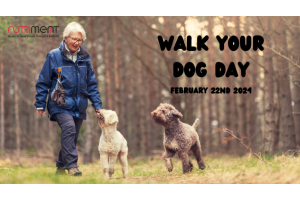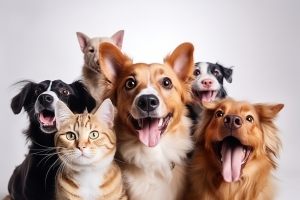Dog-friendly Gardens: a Place of Enjoyment for You & Your Dog

To an excitable pooch, your garden presents an endless source of fascination and adventure. An exuberant dog will happily dig up a flower bed, snack on a compost heap and lap up pond water. But what if the flower bed contains poisonous spring bulbs, the compost is laden with toxic mould and the pond water is rich in bacteria?
There are multiple hazards in your garden that pose a significant danger to your dog if left unchecked. According to the Health and Safety Executive, there are approximately 15 official investigations a year involving dogs and slug pellets – and that’s only one of the many potential dangers that lurk in your outside space. So what’s the answer? To ensure you eliminate the dangers and create a safe garden that appeals to your dog as well as you, a little careful planning and design is needed.
Here are a few pointers to set you on your way.
Secure all boundaries
Create a secure border around your garden with strong fencing which extends deep into the ground. This will prevent your dog from escaping by digging under the fence. Make sure it’s of a sufficient height – 6 feet for medium-sized dogs – as some dogs are alarmingly good jumpers.
Create pathways
Your garden is the ideal place for your energetic dog to let off steam. However, your high-spirited hound may run wild across your lawn and borders if he’s left to his own devices. There’s a simple answer – give him a designated route around the garden by laying a path. Most dogs willingly follow paths, and this will ensure your borders remain undisturbed.
Protect your plants
Whilst large shrubs and trees are hardy enough to withstand a dog’s attention, smaller more delicate annuals and perennials will need protection. Raised beds and tall planters are an effective way to protect your garden plants from your dog. Hanging baskets are another option.
Let them dig
Some dogs are compulsive diggers. Rather than trying to quash the habit, it’s a good idea to create a designated digging area in your garden where you can bury a favourite toy or a bone.
Establish a toilet area
If your dog wees on the lawn, it will discolour the grass. It’s a good idea to establish a
designated toilet area for your dog in the garden. This will need to be cleaned at least once a week but will contain the offending odours and mess.
Make them comfortable
Provide shade in your garden so that your dog can relax in comfort. And don’t forget to give access to clean water by topping up his bowl regularly.
Choose plants carefully
Many garden plants are toxic to dogs, including
lilies and spring bulbs. Use a detailed list of poisonous plants to help guide your planting.
Go organic
To keep your garden truly dog-safe it’s wise to avoid all chemicals. Fertilisers rich in nutrients also contain many additives which, if ingested by your dog, will irritate the stomach and cause vomiting and diarrhoea. Whilst it’s safer to use your own organic compost, ensure your composter is securely shut as the mould that grows on some foods contains mycotoxins which is very harmful to dogs. It’s also important to avoid pest bait for snails and slugs which contains the potentially deadly substance, metaldehyde. And rat and mouse bait contain warfarin-like compounds which have similarly devastating effects.
Love your pet, love your garden
Follow these simple steps and you can create a garden that brings enjoyment to both you and your dog. Just remember, you need to protect your beloved pet from outdoor dangers and at the same time protect your plants from your energetic and excitable pooch!
Written by Written by outdoorartpros.com





